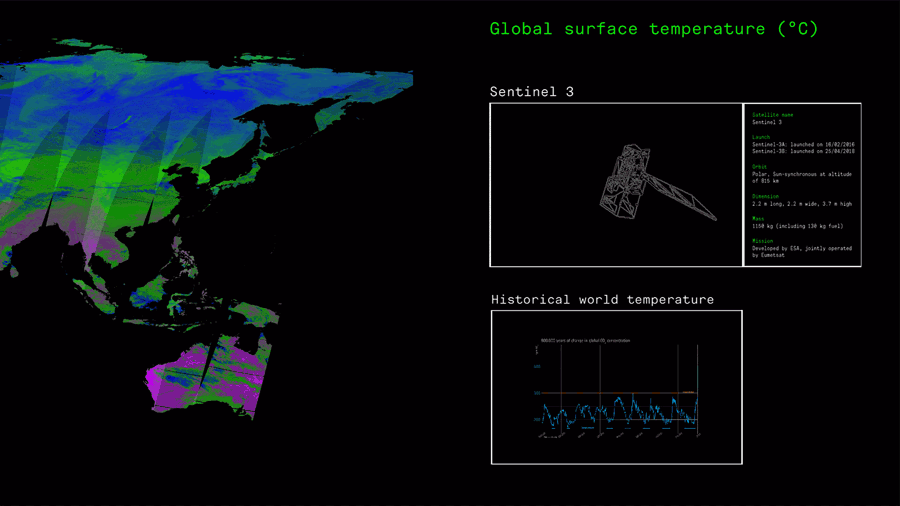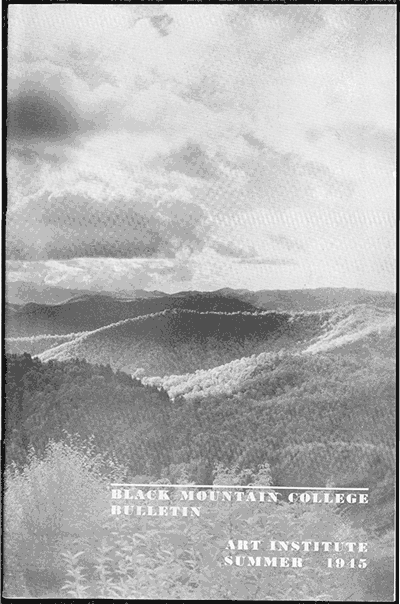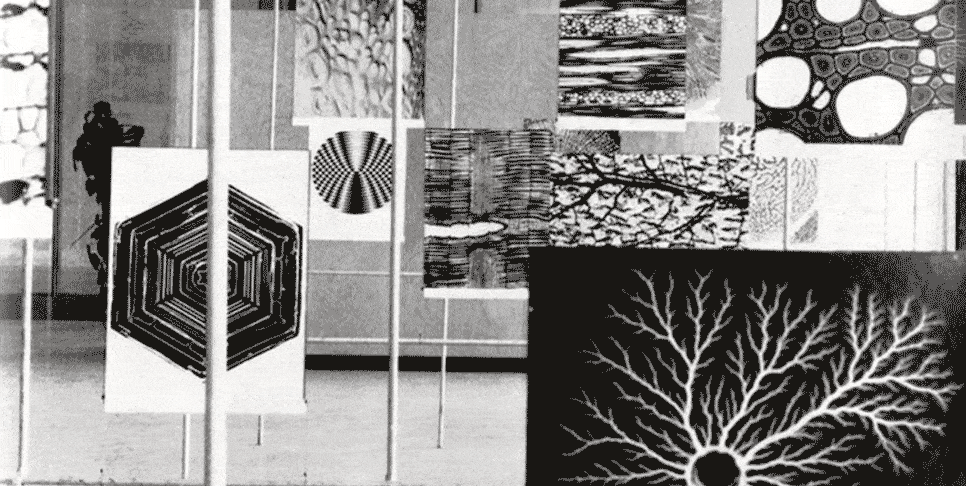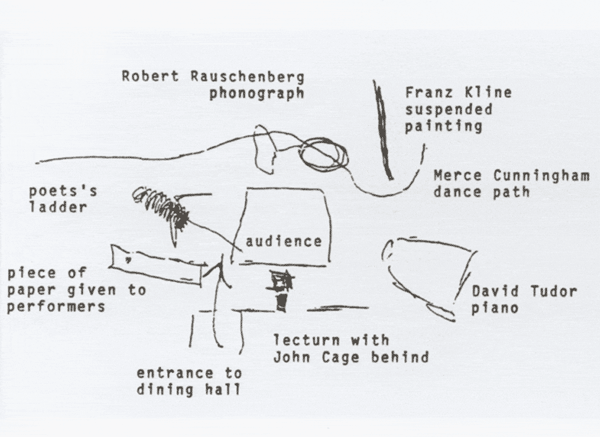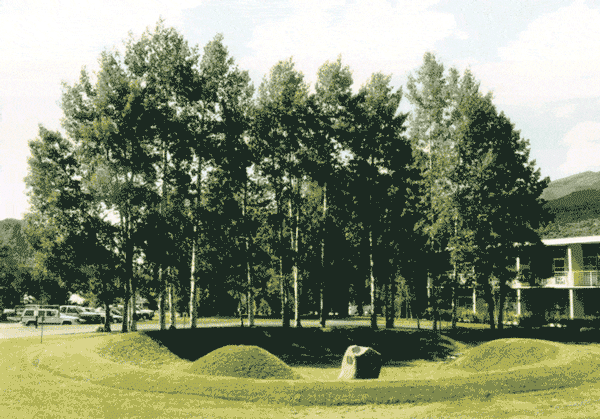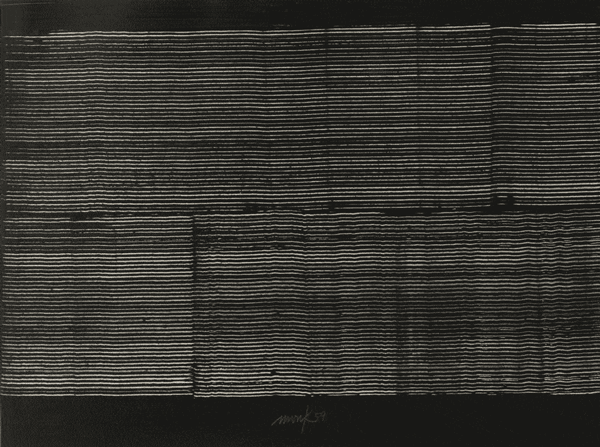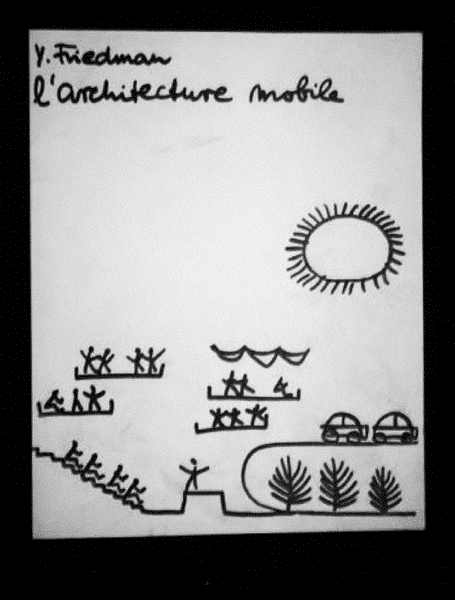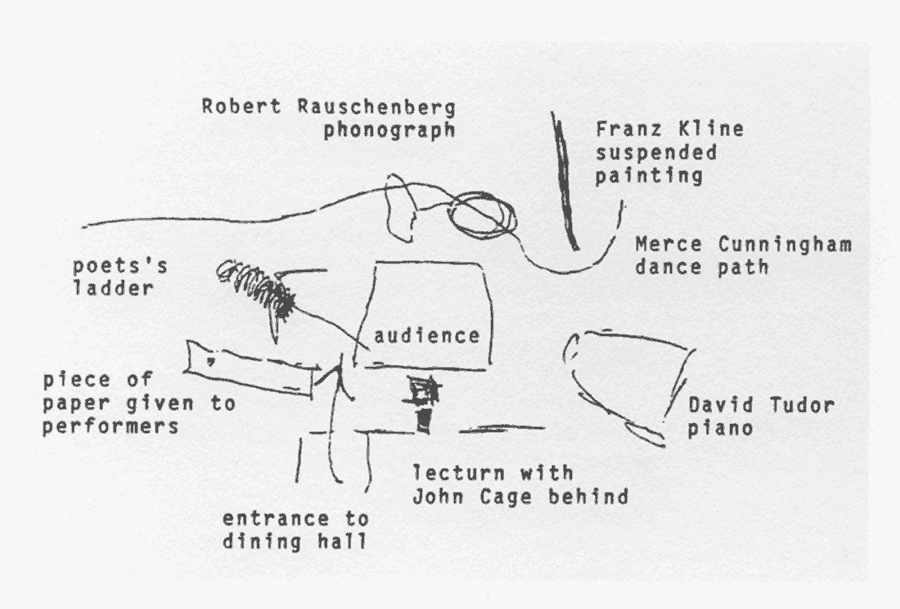
|
Leaflet published on the occasion of the exhibition "Kunst und Naturform" (Kunstahalle Basel, 20 September – 19 October, 1958) Zürcher Hochschule der Künste / Museum für Gestaltung Zürich / Grafiksammlung, all rights reserved (retrieved from emuseum.ch, March 2021). |
|
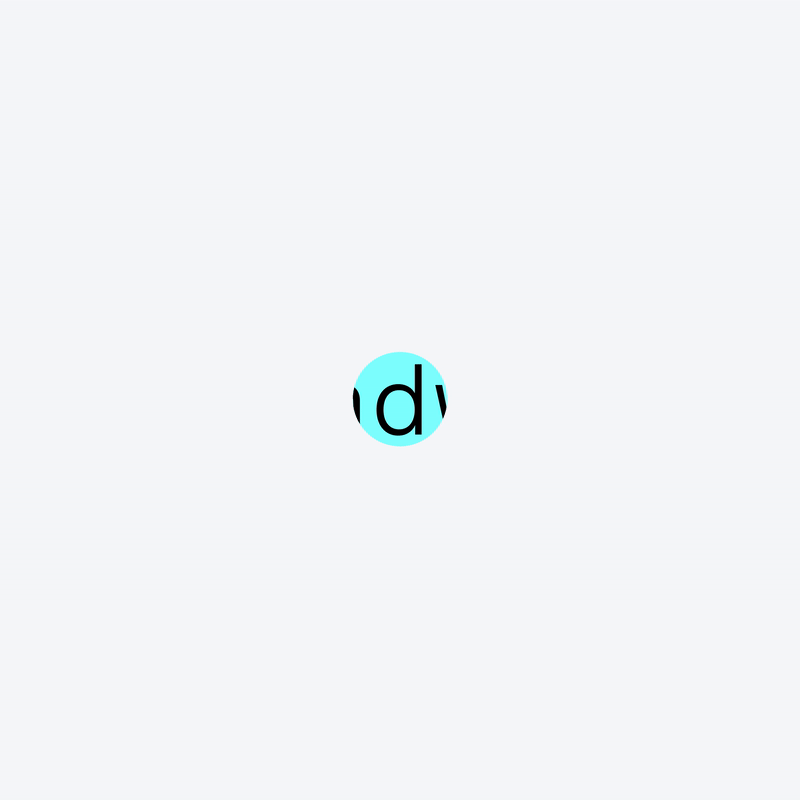
Kunst und Naturform
Echoing the “Groundworks” timeline: 1958
A selection of paintings and sculptures of the past 50 years, in various abstracts styles, was accordingly shown alongside a selection of corresponding microphotographs. Many people thus for the first time became conscious that the forms used by artists who had apparently turned their backs on nature were in fact to be found in nature itself.
Willi Jäggi — Kunst und Naturform. Form in Art and Nature. Art et Nature,
Georg Schmidt, Robert Schenk (eds.), 3rd ed. (New York: Universe Books, 1967), 8.
“Interestingly, two years after Kepes’s work was published in the US, an exhibition entitled Kunst und Naturform (Form in Art and Nature) was organised at the Kunsthalle in Basel, Switzerland, by Gottfried Honegger in collaboration with Arnold Rudlinger (a curator at the Kunsthalle), and Robert Schenk. It was organised for the occasion of the two hundredth anniversary of the firm J. R. Geigy S.A., a company manufacturing dyestuffs. The rationale of the exhibition was to highlight the correspondence between the forms seen in non-representational art and those observed by the scientist under the microscope (Jäggi in Schenk and Schmidt 1967). It was especially interesting because the exhibition united the works of many contemporary artists of that time, such as Cezanne, Picasso, Mondrian, Matisse, Kandinsky, Klee, and Pollock, with photomicrographs of different matter. While neither Kepes nor Burchard claimed parallels between images that appeared The New Landscape in Art and Science and were aware of a critical view of any possible ‘correspondence’ between them, Willy Jäggi (Swiss critic and publisher), in his foreword for the exhibition catalogue Form in Art and Nature (first published in 1958), courageously stated:
A selection of paintings and sculptures in various abstract styles were accordingly shown alongside a selection of corresponding photomicrographs. Many people thus for the first time became conscious that the forms used by artists who had apparently turned their backs on nature were in fact to be found in nature itself. (Jäggi 1967, 8)
The exhibition was not arranged in a historical or other systematic order. Rather, it was divided into the following five groups of ‘parallels’, linking artworks and photomicrographs:
1. Analytical (geometric, stereometric):
Paul Cezanne, Cubist artists Georges Braque, Pablo Picasso and their successors Pablo Palazuelo, Vieira da Silva, and Gottfried Honegger
2. Geometric two- and three-dimensional constructivism:
Piet Mondrian, Robert Delaunay, Sophie Taeuber, Richard P. Lohse, Camille Graeser, Max Bill, and Serge Poliakoff
3. Spatial penetration of lines, surfaces and colours:
Walter Bodmer, Maurice Esteve, Jean Bazaine, Afro Basaldella, Jean-Paul Riopelle, Mark Tobey, and Lenz Klotz
4. Organic growth forms:
Henry Matisse, Wassily Kandinsky, Paul Klee, Hans Arp, and Max Bill
5. Non-representational painters:
Augusto Giacometti, Wols (Alfred Otto Wolfgang Schulze), Georges Mathieu, Jackson Pollock, Piero Dorazio, Clyfford Still, and Sam Francis
A fundamental aim of the exhibition was to link representational artistic interpretations of visible objective reality with the reality that is invisible to the naked eye and to show their resemblances. For this purpose, the artworks were grouped in pairs without any system except for the visual similarity. In a subsequent edition of the accompanying publication, Georg Schmidt explained the reason for such design.
It matters not what meaning underlies this parallel between the results of the experimental work of modern art and modern science: the parallel itself is an indubitable fact, and surprising enough as such. (Schmidt 1967, 29)”
Anastasia Tyurina — “The Unseen Water: The Transmigration of Scientific Photography into the Domain of Art through Experimentation with the Scanning Electron Microscope” (PhD Doctorate thesis, Queensland College of Art, Brisbane, Australia, April 2017), 53–55. Accessed here March 2021.
|
"Kunst und Naturform" was an exhibition held in 1958 at the Kunsthalle Basel. The concept of the exhibition was the juxtaposition of 20th century abstract art and microphotographs. |
“maat Explorations” is an ongoing programme that delves into the socio-cultural and environmental transformations stemming from the current bio crisis and ecological destruction. It provides an insight into the hard science of climate intervention and the creative speculations behind innovation-led research to safeguard our planetary co-existence. Prominent in this strand is the installation Earth Bits – Sensing the Planetary, that opens access to the complex interconnectedness between the environmental and the energetic quests and its reverberation through decades of artistic production, political and cultural movements traced from the 1960s until today. On maat ext., a series of #groundworks hashtags introduce the critical explorations that feed into the complex interconnectivity between the environmental and energetic quests, and its reverberation through decades of artistic production, political and cultural movements traced from the 1960s until today. |


